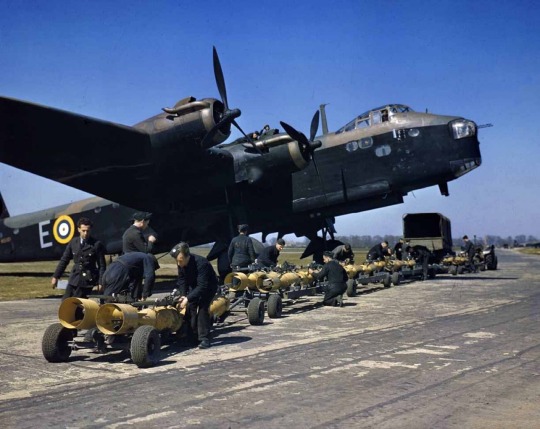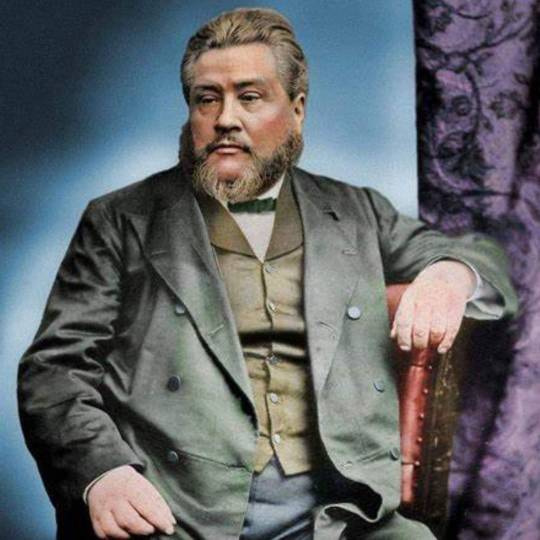#waterbeach
Photo

RAF Short Stirling Mk I
Aircrew in full flying kit walking beneath the nose of Short Stirling Mark I, N3676 'S', of 1651 Heavy Conversion Unit at Waterbeach, Cambridgeshire while the ground crew run up the engines.. Circa 1942 - Photo released by Imperial War Museum.
#RAF#WW2#1942#Waterbeach#Heavy Bomber#Aviation#Short Stirling Mk.I#Military aviation#Combat aircraft
50 notes
·
View notes
Photo

Live in the sunshine, swim the sea, drink the wild air. #seaview #diubeach #art #landscape #sunrise #oceanbeach #oceanlover #travelgram #watercolor #instadaily #seabeachphotography #beachphotography #puri #goa #seashore #waterbeach #life #photo #oceanphotos #like #sealover #seasidebeach #sealinebeach #oceanjewelry #seabeachsun #seabeaches #seabeachaquaparkresort #oceano #oceanbeachibiza #oceanjasper (at Diu, India) https://www.instagram.com/p/CdOgvmMvoxb/?igshid=NGJjMDIxMWI=
#seaview#diubeach#art#landscape#sunrise#oceanbeach#oceanlover#travelgram#watercolor#instadaily#seabeachphotography#beachphotography#puri#goa#seashore#waterbeach#life#photo#oceanphotos#like#sealover#seasidebeach#sealinebeach#oceanjewelry#seabeachsun#seabeaches#seabeachaquaparkresort#oceano#oceanbeachibiza#oceanjasper
0 notes
Text

8th October 1943
Royal Air Force armourers check over the sixteen 250lb bombs before they are loaded into Short Stirling bomber N6101 of No 1651 Heavy Conversion Unit at Waterbeach, Cambridgeshire
#otd #history #british #ww2 #WWII
@WW2Today via

22 notes
·
View notes
Text
Charles Haddon Spurgeon

Charles Haddon Spurgeon (1834-1892) was called to pastor the New Park Street Chapel, London, when he was only nineteen. This church became the 6,000 seat Metropolitan Tabernacle, which he pastored until his death at age 58. Through his relatively short but phenomenally productive ministry, Spurgeon pastored, directed a Pastor’s College, oversaw a Bible and tract society, organized Stockwell Orphanage, published the monthly magazine Sword and Trowel, edited a weekly sermon (among the several he preached each week), and wrote a number of books, including his well-known Treasury of David.
Timeline of the Life of Charles Haddon Spurgeon (1834-1892)
1834 (June 19) – Born at Kelvedon, Essex.
1850 (January 6) – Converted at Colchester.
1850 (April 4)- Admitted to Church membership at Newmarket.
1850 (May 3) – Baptized in the River Lark at Isle-ham.
1851 – Becomes Pastor of Waterbeach Baptist Chapel.
1853 – First literary effort, No. I of Water-beach Tracts published.
1853 (December) – Preaches at New Park Street Chapel, London, for the first time.
1854 (April) – Accepts Pastorate of New Park Street Chapel.
1855 (January) – First sermon in the “New Park Street Pulpit” published.
1855 (February) – First preaches at Exeter Hall.
1855 (July) – Mr. T. W. Medhurst becomes C. H. Spurgeon’s first ministerial student.
1856 (January 8) – Marries Miss Susannah Thompson.
1856 (June) – Metropolitan Tabernacle Building Committee formed.
1856 (September 20)- Twin sons Thomas and Charles born.
1856 (October 19) – Surrey Gardens Music Hall Disaster.
1856 (November 23) – Services recommenced at the Music Hall.
1857 – A second student accepted by C. H. Spurgeon and the Pastor’s College practically founded.
1857 (October 7) – Preaches to 23,654 persons at the Crystal Palace on Fast Day.
1859 (August 16) – Foundation Stone of the Metropolitan Tabernacle laid.
1861 (March 18) – Metropolitan Tabernacle opened with a great prayer meeting.
1864 (June 5) – The famous “Baptismal Regeneration” sermon preached.
1866 – Metropolitan Tabernacle Colportage Association founded.
1867 (March 24-April 21) – Sunday services, each attended by 20,000 persons, held at the Agricultural Hall, Islington, during the renovation of the Metropolitan Tabernacle.
1867 – Stockwell Orphanage (Boys’ side) founded.
1873 (October 14) – Foundation Stone of the Pastors’ College Building laid.
1875 – Mrs. Spurgeon’s Book Fund inaugurated.
1879 – Girls’ Orphanage founded.
1884 (June 18 and 19) – Jubilee Celebrations and presentation of testimonial (£4,500).
1887 (August) – First “Down-grade” paper published in “The Sword and the Trowel.”
1887 (October) – Withdrawal from the Baptist Union.
1891 (June 7) – Last sermon at the Metropolitan Tabernacle.
1891 (October 26) – Goes to Mentone for the last time.
1892 (January 31) – Passes away.
1892 (February 11) – Interred at Norwood Cemetery.
8 notes
·
View notes
Text
Septimus Heap is set in my home town and if we ignore the authors intentions I can prove it
Some brief disclaimers, I know that technically the books are set in the far future, and with water levels rising could not possibly be set in my area, but death of the author and all that, there’s enough evidence that I have thought of Septimus Heap as local to me since I was maybe 13. Also its been years since I read these books so I may have forgotten some pieces of evidence or have some plot details wrong, but this has been on my mind for years at this point. What else, ah yes, not doing this on my main account because I don’t fancy giving out specific information on where I live, because yikes. Finally, while it may not be my home town specifically, I do certainly feel it is my local area ie the Fens in East Anglia (UK)
Septimus Heap is set in Ely in the 12th century. I have two main pieces of evidence for this, the geography and history of the area (shocking I know). I’ll try not to go into unnecessary levels of detail, but no promises.
I grew up (and currently live) in Littleport, a small town/large village just outside Ely in Cambridgeshire. The main geographical feature of the Ely area are the fens. I dont know how common a term fen is so you’ll forgive me if I explain, a fen is a great big wetland, or marsh, if you will. Now the fens were drained sometime in the 1600s, and before that most of the area was underwater. This is why, even though we’re around an hours drive from the sea, all the place names sound like they’re from a waterfront, LittlePORT, ISLE of Ely, WATERBEACH, and also why I don’t think its set in Ely specifically, but instead, close by, but I’ve got to have a catchy title you know. Growing up I always pictured the Marram Marshes as one of the surviving fens, namely Wicken Fen or the Welney Wetland Centre (neither of which can I find good pictures of right now, why are people taking pictures of the walkable paths and not the views of the fens themselves) which we used to visit often when I was younger. Now I’ll admit that this isnt very strong evidence on its own, swamps aren’t an uncommon thing, and even the surviving fens are nowhere near as flooded as they used to be , so its easy to dismiss that they could be the marram marshes, and if it wasn’t for some of the local history I’d be inclined to agree with you that this is a bit of a reach.
Before jumping into the history I do just briefly want to say that the rest of the local geography also lines up, but where in the UK wouldn’t it. Lots of nearby farmland, and if you travel a little bit plenty of forests (there aren’t really any here specifically because as a consequence of being a fen we have very high quality soil for farming, so it is mostly fields until you get out of the fens specifically, but I don’t think that’s a big deal for my theory.
Now, Angie Sage doesn’t seem to pull from the areas history in general, but there are two characters who’s names either are, or are very close to, prominent figures in Ely’s early history, and its not like they’re common names either. Additionally the lifetimes of these two historical figures seem to line up with their book counterparts well enough for me to give the specific time period of the 12th century. I’ll go through and give a couple of details on each of them in the order in which they appear in the books (which is also reverse historical order, and if I remember correctly, the reverse of how significant they are as characters).
Up first we have everybody’s favourite ghost, Sir Hereward, and his real life counterpart, Hereward the Wake who died around 1072 according to Wikipedia, so important is Hereward to Ely that they even have a pub named after him (but don’t go thinking we’re cool, there is also a small museum dedicated to Oliver Cromwell). For those who didn’t take the Anglo-Saxon/Norman invasion unit of GCSE history, Hereward the Wake was an Anglo-Saxon who led a rebellion against William the Conqueror, the most successful one of them all in fact. The rebels took shelter in a monastery in Ely, or more accurately on Ely which was, at that point an island that only locals could navigate the fens to get to. Many a Norman died trying to cross the waters, until the monks eventually led them across safely. This rebellion is also where every web-toed fen dwellers favourite story comes from, that of William the Conqueror getting a witch to cast a spell on the rebels, which involved her sticking her butt in the air, but I digress.
And then there’s Etheldredda, counterpart to Saint Æthelthryth or as I always heard her called, Etheldreda. I have no idea what she did in her life, but she was a resident of Ely and gained sainthood because she kept her vow of virginity even through marriage. She’s important enough to the history of Ely that my secondary school, Ely College, named a house after her, it may have been the shittest house house, but it was a house none the less. Anyway, she died around the year 679, again, according to Wikipedia, and 500 years later its the 12th century, and my understanding is Queen Etheldredda was born around 500 years before the book she appears in.
Anyway, thats my evidence, like I said, there might be more but its been a while since I read these books. I know the character’s histories and the histories of the real life people don’t really line up, but does anything else? Feel free to let me know what you think, am I insane or is there merit to this belief I’ve held since since I was 13?
34 notes
·
View notes
Video
Hawker Hurricane IIc ‘BN230 / FT-A’ (really LF751) by Alan Wilson
Via Flickr:
c/n unknown Built in 1944 for the Royal Air Force with the serial LF751. Initially allocated to 1681 Bomber Defence Training Flight, moving to No.27 Operational Training Unit at RAF Waterbeach later in the year. Retied from active use in July 1945, she was allocated the maintenance serial 5466M and stripped of parts to keep active Hurricane LF363 flying. LF363 is, of course, still flying with the Battle of Britain Memorial Flight at RAF Coningsby. LF751 was eventually rebuilt for static display in 1954 using parts from two other Hurricanes, Z3687 and PG953, becoming a bit of a composite airframe in the process. She remained on display outside at Waterbeach from 1954 until 1963 when she was moved to Bentley Priory. She was briefly taken to Henlow in 1968 and was used for static scenes in the ‘Battle of Britain’ movie, after which she returned to her gate guard duties at Bentley Priory. She was finally rescued in 1985 and underwent an intensive three-year restoration by the Medway Aircraft Preservation Society (MAPS) at Rochester. Rolled out in early 1988 and painted to represent ‘BN230’ of 43 Squadron, she then went on display inside the museum at Manston alongside previously restored Spitfire XVI TB752. Spitfire & Hurricane Memorial Museum Manston, Kent, UK 30th April 2022
8 notes
·
View notes
Text
digitalofficesystems
Digital Office Systems is simply the best provider of Estate Agent Window displays, Shop Front Fascia & Signage, High Bright LCD Screens, Digital Signage, Wall Displays and Furniture add this to our Vitrine Media LED light pockets, we are unrivalled in the industry with over 20 years experience
+44 1223 441661
Digial Office Systems 5 Glenmore Business Park Ely Road Waterbeach Cambridge CB25 9FX
http://www.digitalofficesystems.co.uk
https://www.instagram.com/digitalofficesystems/
https://issuu.com/digitalofficesystems
https://twitter.com/digitaloffice5
https://www.pinterest.co.uk/digitalofficesystems/
https://www.linkedin.com/in/digitalofficesystemscouk
https://digitalofficesystems.blogspot.com/
https://sites.google.com/view/digitalofficesystemsuk/home
https://about.me/digitalofficesystemscouk
https://www.youtube.com/@digitalofficesystemscouk/about
https://500px.com/p/digitalofficesystemscouk
https://angel.co/u/digitalofficesystems
https://digitalofficesystemscouk.wordpress.com/
https://draft.blogger.com/profile/16474895404574671171
https://www.flickr.com/people/197852603@N02/
2 notes
·
View notes
Link
No-one has been able to find out the true identity of a baby named Gabriel by medics, even with DNA.
0 notes
Text
Overdenkingen Met Spurgeon | Dommelen achter in de kerk
Eens was mijn gehoor te Waterbeach zeer slaperig. Het was op een zondagmiddag; die namiddagdiensten in onze Engelse dorpen zijn gewoonlijk niet anders dan een verspilling van krachten. Rundergebraad en pudding liggen zwaar op de zielen der hoorders. De prediker zelf is als verdoofd en verlamd door de werkzaamheid van zijn geest, terwijl de spijsvertering haar eisen doet gelden en het ogenblik beheerst. De mensen hadden al een te overvloedig middagmaal gebruikt, en zo kwamen zij zwaar en versuft in de kerk. Het duurde niet lang of zij begonnen te knikkebollen. Zo heb ik mij dan van het oude middel bediend om hen wakker te krijgen. Ik riep uit alle macht: "Brand! Brand! Brand!" Ze sprongen op van hun plaats en vroegen waar de brand was. En, gelijk andere predikers in dezelfde omstandigheden, heb ik geantwoord: "In de hel, voor de zondaren die de Zaligmaker niet willen aannemen."
0 notes
Text
Policía encuentra el cuerpo de un bebe recién nacido en un contenedor de reciclaje
Policía encuentra el cuerpo de un bebe recién nacido en un contenedor de reciclaje
La policía de Cambridgeshire dijo que el bebé, llamado Gabriel por el personal médico, fue descubierto en Ely Road, Waterbeach el 29 de noviembre.
Los oficiales dijeron que las consultas con el personal del centro de reciclaje sugieren que es “probable” que el bebé provenga del reciclaje recolectado de los contenedores azules domésticos en Peterborough y las aldeas circundantes, March,…

View On WordPress
#bebe Gabriel#Cambridge#March#Melbourne#Mill Road#Mill Road en Cambridge#Peterborough#recien nacido Gabriel#Whittlesey
0 notes
Photo

Sunsets are always special... #seaview #seabeachsunset #art #beachphotography #landscape #sunrise #travelgram #oceanlover #oceanbeach #seabeachphotography #instadaily #watercolor #puri #goa #seashore #like #sealover #life #odisha #waves #dighabeach #oceanphotos #photo #waterbeach #seabeachaquaparkresort #seabeaches #kolkata #oceanjewelry #seasidebeach #seabeachsun (at Vadanappally Beach) https://www.instagram.com/p/CmopbXCSlCL/?igshid=NGJjMDIxMWI=
#seaview#seabeachsunset#art#beachphotography#landscape#sunrise#travelgram#oceanlover#oceanbeach#seabeachphotography#instadaily#watercolor#puri#goa#seashore#like#sealover#life#odisha#waves#dighabeach#oceanphotos#photo#waterbeach#seabeachaquaparkresort#seabeaches#kolkata#oceanjewelry#seasidebeach#seabeachsun
0 notes
Text

BIOGRAPHIE DE CHARLES SPURGEON: "LE PRINCE DES PRÉDICATEURS"
Né le 19 juin 1834 à Kelvedon, au Royaume-Uni, Charles-Haddon Spurgeon est né pour devenir pasteur. En effet, c'est le modèle dont il a été entouré depuis sa naissance, son père, John Spurgeon et son grand-père, James Spurgeon étant eux-mêmes pasteurs. C'est comme cela qu'il fut élevé dans la connaissance de l’Evangile.
En plus d'être versé dans les saintes écritures, Charles a aussi été influencé par d'autres écrits, ceux de divers théologiens, pasteurs et puritains.
Jusqu'à ses 15 ans, le jeune adolescent ne connaissait pas personnellement Jésus-Christ. Il dit qu'à cette époque, il n’avait pas la paix dans son cœur car il était écrasé par la conviction qu’il était pécheur et qu’il avait besoin d’être sauvé. Bien qu'il eut su que Jésus était mort pour nos péchés, il n’y voyait cependant aucune application pour lui-même.
La vie de Charles Spurgeon bascula en janvier 1850, alors qu'il se rendait à un rendez-vous sous une forte tempête de neige. Il dut alors s'abriter au sein d'une église méthodiste de Colchester et suite à l'invitation du prédicateur à regarder à Christ pour être sauvé, il expérimenta la nouvelle naissance.
Charles Spurgeon fut alors baptisé en septembre de la même année à l’église baptiste St. Andrews Baptist Church de Cambridge.
Prêchant à l’école du dimanche, il fut invité une fois à prêcher au culte et il se rendit compte de ses capacités pour la prédication.
En Octobre 1851, à l’âge de 17 ans, il devient pasteur à l’Eglise baptiste de Waterbeach, dans le Cambridgeshire. Puis deux ans plus tard il fut appelé pour prêcher à l’église de New Park Street Chapel, à Londres, auparavant dirigé par le théologien baptiste John Gill, dans laquelle il deviendra trois ans plus tard pasteur, à l’âge de 20 ans seulement.
Spurgeon se maria en 1856 et eut deux fils (Charles et Thomas) de sa femme Susannah.
Le Style
Les prédications de Charles Spurgeon deviennent très vite des succès populaires et il faisait régulièrement salle comble, son audience allant jusqu'à 10.000 fidèles, ce qui est un grand nombre pour l'époque. Son succès, Charles Spurgeon le doit à son style décontracté et accessible. Ce qui dénotait avec le style vieilli et lassant des prédicateurs habituels qui avaient fait de longues études dans des collèges bibliques. Il réussissait par ses sermons à faire rire ses auditeurs, à les émouvoir et à les faire réfléchir quand il le fallait.
Chacun de ses sermons contenait le message de l’Évangile : "L’homme pécheur a besoin d’être sauvé et seul Dieu peut le sauver". Ils comprenaient également un appel à accepter Jésus dans sa vie.
Le ministère
En 1861, Charles Spurgeon devient pasteur de l’Église Tabernacle Métropolitain et la même année, inaugure un nouveau bâtiment à Éléphant and Castle avec un auditorium de 6 000 sièges.
Charles voyageait beaucoup ; il alla prêcher à New York en Amérique, en Irlande, à Bristol en Écosse, à Paris en France, et dans plusieurs villes d’Angleterre. Il proposait que la moitié de l’offrande aille à l’Église locale et que l’autre moitié soit ajoutée aux fonds pour le Tabernacle.
Spurgeon et l’Église accomplirent beaucoup d'œuvres :
La construction d’une école ;
Un magazine mensuel pour les chrétiens, L’Épée et la Truelle ;
Un dépôt de société biblique où des Bibles sont vendues ;
Une société des écoles du dimanche ;
L’Association des Colporteurs, des hommes vendant des Bibles et les distribuant des traités pour répandre la Bonne Nouvelle partout ;
Une maison de retraite ;
Un orphelinat.
Ses Sermons
Les sermons sténographiés de Spurgeon sont au nombre de plus de quatre mille, car il ne prêchait pas seulement dans son Eglise, et il ne se répétait jamais. Ses sermons ont été imprimés chaque semaine, pendant de longues années. Ils sont répandus dans tous les pays de langue anglaise, et beaucoup sont traduits en plusieurs langues. Il en existe un certain nombre en français.
D'une rare profondeur, les sermons de Charles Spurgeon sont résolument tournés vers l'appel à la repentance et le Salut des âmes. Son message est centré sur la personne de Christ, l'oeuvre rédemptrice de la croix, la grâce, l'amour de Dieu, l'abandon du péché et la sanctification.
Extrait du sermon "L'homme de douleur" en référence au livre d'Esaïe 53
« Les mains de cet homme sont remplies de bénédictions, ses yeux versent des larmes de compassion, de ses lèvres sortent des paroles d’amour, et de son cœur la tendresse déborde. Ne vois-tu pas l’entaille dans son côté ? Cette blessure ouvre la voie vers son cœur, et celui qui a besoin de sa compassion pourra bientôt la trouver. Ô pécheurs ! La voie vers le cœur du Sauveur est ouverte, et ceux qui le recherchent dans la repentance ne seront jamais repoussés. Pourquoi les plus désespérés ont-ils peur de s’approcher du Sauveur ? Il a accepté de devenir l’Agneau de Dieu. Je n’ai jamais rencontré d’enfant qui aurait peur de s’approcher d’un agneau. Même les plus craintifs peuvent s’approcher d’un agneau, et c’est cet argument que Jésus a utilisé pour dire à tous ceux qui sont fatigués et chargés : « Prenez mon joug sur vous et recevez mes instructions, car je suis doux et humble de cœur » (Mathieu 11.29).
Ses détracteurs
Bien qu'aimé par la plupart des londoniens, Charles Spurgeon n'en était pas moins haï par beaucoup. Les rédacteurs de journaux de l'époque par exemple ont répandu beaucoup de mensonges à son sujet et les hypers calvinistes ne l’appréciaient pas beaucoup non plus.
Certaines des prises de position du prédicateur n'ont fait qu'accroître l’opposition contre sa personne, comme quand ce dernier dénonça l’esclavage en Amérique ; il y perdit la source de revenus de ses sermons. Il marqua également son désaccord à propos de la nouvelle théologie, ou « Nouvelle Pensée », dont les membres de la Fédération baptiste d’Angleterre négligeaient le danger ; il s’en retira donc, ainsi que les membres du Tabernacle. Peu de temps après cette décision en mars 1888, il eut plusieurs périodes alternant maladies, fatigues et rétablissements, mais il acheva finalement son pèlerinage terrestre le 31 janvier 1892 à Menton en France.
Nous retiendrons de ce prédicateur, résolument en avance sur son époque, son coeur plein de compassion pour les âmes et sa détermination à rompre avec l'ordre ancien pour amener le plus grand nombre à la connaissance du véritable message de l'Évangile pur, authentique, véritable et sans concession.
0 notes
Text
More tests needed to determine how baby boy died before he was found at recycling centre
More tests needed to determine how baby boy died before he was found at recycling centre
More tests needed to determine how baby boy died before he was found at recycling centre – as concerns grow for the wellbeing of his mother
The body of a baby was discovered in October in Waterbeach, Cambridge
A post-mortem examination of the infant proved to be inconclusive
Police are appealing for information and say they are keeping an open mind
By Matt Powell For Mailonline
Published:…

View On WordPress
0 notes
Text
Body of newborn baby found at recycling centre
Body of newborn baby found at recycling centre
Police found the deceased infant at a site in Ely Road, Waterbeach (Picture: Google Maps)
The body of a newborn baby boy has been found at a recycling centre.
Cambridgeshire Police said the deceased infant was discovered at the site in Ely Road, Waterbeach on Tuesday, with officers called at midday.
Detective Superintendent John Massey said: ‘This is an incredibly sad and upsetting incident for…

View On WordPress
0 notes
Text
Mechanical Technician / Fitter Job in Waterbeach, Cambridgeshire
Mechanical Technician / Fitter Job in Waterbeach, Cambridgeshire
Apply for Mechanical Technician / Fitter job in Waterbeach, Cambridgeshire in Engineering.
Job Description: Mechanical Assembler / Build Technician required to build bespoke precision Special Purpose Machinery used in various industries.
Working with the project engineers to fit, assemble and commission the machines using agreed working methods and tools, E.G., BOM's, Assembly Drawings, Build…

View On WordPress
0 notes
